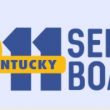More FirstNet details from the IWCE roundtable discussion
There are a couple of other practical reasons for allowing the critical-infrastructure sector to use this network on some level: it has a great many embedded assets that can be leveraged, which will help to drive down the cost of building the network, and it represents a much-needed source of revenue in the form of user fees.
Johnson acknowledged that the network has to be self-sustaining.
"We do not today anticipate going back to Congress, or to the states and localities — beyond the device-based, user-fee idea — and tell them the we need 'X' million [dollars]," he said. "That is not in anybody's thinking right now."
RELATED: FirstNet board members talk service price, timelines
Regardless whether critical-infrastructure assets eventually are pulled into this network, Johnson said that it is "highly likely" that public-safety assets will be leveraged "no matter what model we choose."
"Not only does public safety have towers where it normally isn't commercially viable, but public safety, for public safety, is likely to give us no-rent or reduced-rent access to their towers, and that just lowers the cost of network operation."
Dowd added that it's only logical to do leverage public safety's assets for the broadband network.
"From the perspective of the city of New York, we have 300 sites within the NYPD radio system, and you have the NYCWIN broadband network in the city that has over 400 sites," he said. "That's 700 sites that you potentially could leverage. And then you look at the backhaul that's in place to support those sites, and can you leverage that? The answer is that you absolutely could. How much would that reduce the cost of the buildout of this network in a place like the city of New York?"
Both Dowd and Johnson stressed that no decisions have been regarding network design, and won't until the FirstNet board has a chance to meet with officials in all 56 U.S. states and territories, a process that is expected to be completed by the end of June. According to Johnson, such input will be vital.
RELATED PODCAST: FirstNet's Johnson on engineers' public-safety learning curve
"This is a listening tour to make sure that we understand the requirements of the states," he said. "The fact is … Oregon is very different than Nebraska. Oregon is bumpy and has a beach, and Nebraska isn't and doesn't. The needs, topology, everything is different. So, we have to go out there and listen — that's job one."
Dowd is eager to get going. "A year from now, if we can't sit here in front of you and say that we have the states excited about working with FirstNet and accomplishing this mission, we haven't done our job. That doesn't mean that we're going to make everybody happy. But the goal here is to make sure that the states and localities are comfortable that there's an ongoing dialog and that there's progress being made in terms of what they need to make this network work."
Johnson added that it is equally vital that the FirstNet board hears from the Public Safety Advisory Committee chaired by Harlin McEwen, which was created expressly for that purpose.
"We need from our PSAC that over-the-horizon view of what the human component is going to look like at the local government level," Johnson said. "We've asked them to look over that horizon and tell us the human level, the operational level, of what impacts the nationwide network is going to have. … A lot of what we're going to do is an engineering challenge, but I think the human challenge is going to be a far greater lift."










